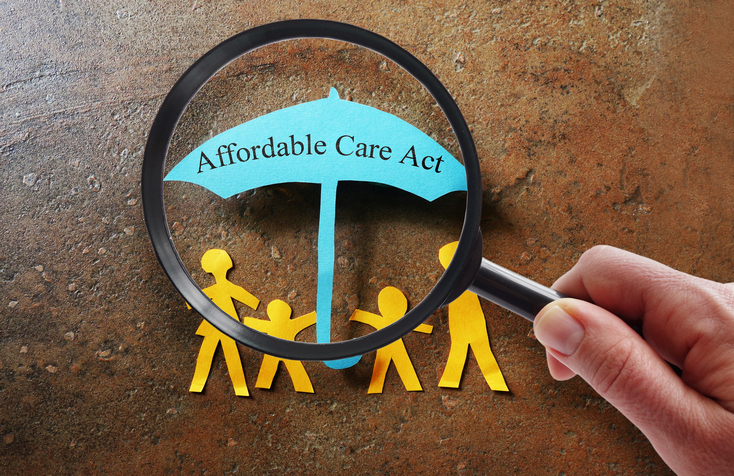In this series we are zooming in on trends, brands and innovations within the healthcare space. We hope to explore new perspectives on existing structures and creative approaches that are redefining the system. By focusing our attention on singular aspects of the market we will discover that opportunities for growth are highly achievable. See our previous post here.
With buzz around Apple’s forthcoming iWatch, FitBit’s Force and the continued success of Nike’s fuel band, the celebration of “quantified self” technology is on the rise. Mobile apps, wearable tech and other products that connect users with their health is a clear sign that consumers want to play an active role in their own wellness. If leveraged correctly, the quantified self-movement could provide valuable patient insights as well as reduce long-term costs for healthcare brands.

With the Rise of AI, What IP Disputes in Healthcare Are Likely to Emerge?
Munck Wilson Mandala Partner Greg Howison shared his perspective on some of the legal ramifications around AI, IP, connected devices and the data they generate, in response to emailed questions.
But before talking about the benefits to brands, we must first understand their importance to the consumer. After all, it’s the customer (or in this case, patient), that should always come first. These products don’t just monitor activity or measure how long you’re at the gym. They allow users to connect their actions with the effect of those actions. Quantified self products engage the wearer with their lifestyle goals, stress levels and current healthcare regimens. This unprecedented awareness of one’s actions can provide insights into behaviors that are negatively affecting health.
To get a better sense of this feedback loop between measurement and behavior change lets look at a few examples of quantified self products.
Lift is the generalist of quantified self applications. It focuses on a simple cornerstone of wellness: Building habits. Users choose simple goals – call parents, read emails, go to the gym – and confirm each time they make progress towards that goal. Their progress then populates an attractive graph and is simultaneously shared with their network. Lift uses beautiful visual reinforcement, social support and iterative progress to enable constructive habit building. The feedback loop goes beyond physical health to make overall behavior change fun and engaging.
The emWave2 approaches behavior change from a more scientific perspective. The portable device measures your pulse and transmits this information to a desktop graphic or in the form of a light array on the device. The device also doubles as a tool to encourage calming states. Users breathe along with a light meter on the device and can see changes in their breathing patterns and in turn their heart rate. With practice, users can achieve calm states quickly and effectively, lowering abnormally high pulse readings. By monitoring physiology and providing immediate feedback in addition to providing a tool to act on that feedback, the emWave2 provides more focused insight into behaviors.
Much like Lift, Mango is about reinforcing positive behaviors. However, it’s focused on one goal: Healthcare compliance. Mango was created to keep patients on track with their medication. Whether it’s a prescription for anxiety or a regimen of vitamins, Mango offers reminders, warnings of dangerous interactions and a gamified system to encourage adherence. As one tracks their successful compliance with their medications, Mango tallies points that unlock real world rewards for the user. This is where quantified self technology and professionally advised health plans intersect. Mango builds habit, tracks progress and incentivizes appropriate adherence practices.
The popularity of these tools is a sign of a more engaged healthcare consumer, and that was only a small sampling of the apps and products available. Today’s consumer wants to know how their healthcare is connected to their everyday actions. They want simple tools to gather, understand and act on those connections. Assuming this, we can imagine two positive results for hospitals, medical professionals, pharmaceutical companies and other brands within the healthcare field.
A more engaged consumer means more insight into consumer behavior.
Encouraging the use of quantified self tools will more actively engage consumers with their habits and actions. Instead of vague understandings about compliance with medication or how much exercise a consumer is getting, these tools offer incentives to monitor, measure and share this information. If the consumer is more engaged with their health through simple, entertaining tools, insights can be gathered and brands can use these insights to create strategies to shape their services around a consumer’s unique needs.
Engaged consumers lower painful costs for the system.
One of the most exciting potentials in quantified self technology is that healthcare consumers will gain a clearer view of their overall health. This can empower them to predict potential emergencies before they happen. Fewer emergencies put less strain on a taxed system. Even a small amount of patients avoiding one catastrophic incident – costing hundreds of thousands of dollars – can add up quickly. Putting knowledge into the hands of consumers enables more consistent, dependable consumer relationships without painful spikes in the cost of insurance, hospital staff and distribution channels.
The growing popularity of quantified self tech is a boon for the healthcare system. It offers the possibility of more knowledge in the hands of consumers. Greater understanding of consumer behaviors can inspire brands to rethink how they roll out products, when and with what messaging. With this knowledge, brands can better understand the consumer, produce products aligned with their needs and offer them a system that more uniquely supports their lifestyles.
—————————–
Prophet is a strategic brand and marketing consultancy. We leverage our cross-industry experience with global brands to deliver inspired and actionable ideas that help our healthcare clients win in the marketplace. For more, visit www.prophet.com/healthcare.















